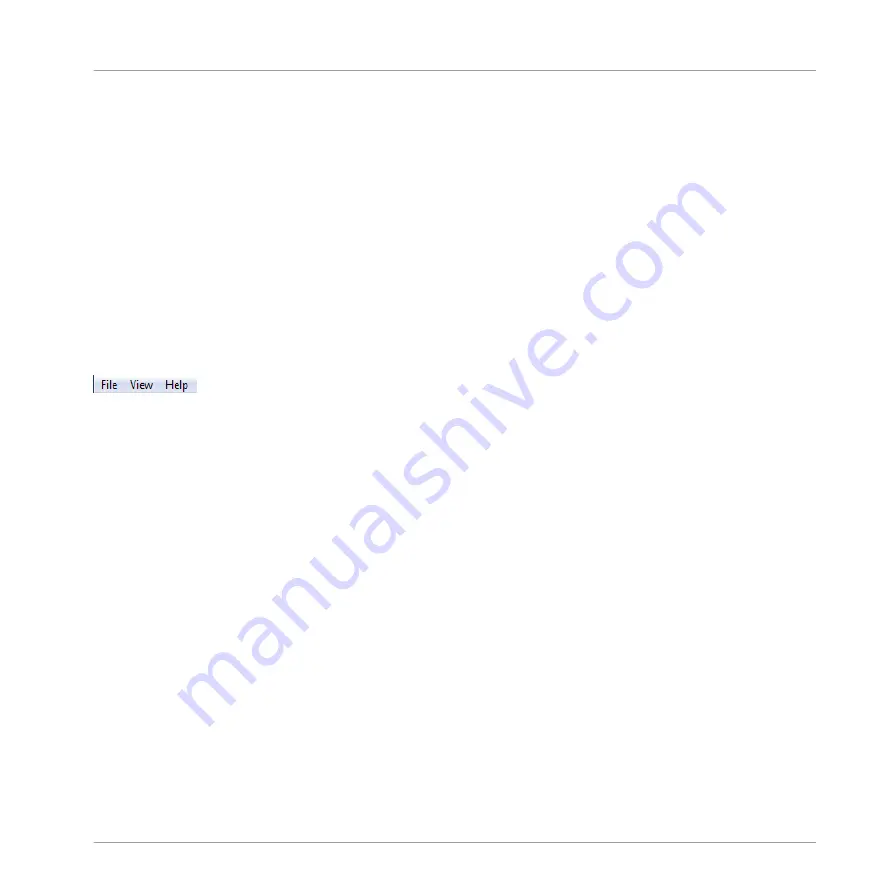
25
Reference
This chapter systematically describes all the user interface elements of the Controller Editor.
The Controller Editor is the “control tower” of your NI controller’s remote control system. It
stores the links between hardware actions (what you do on your NI controller) and MIDI events
(what you want to achieve within a specific piece of MIDI-capable software or hardware).
25.1 The Application Menu Bar
The Controller Editor menu bar contains three menus: the
File
menu, the
View
menu and the
Help
menu.
The Application Menu Bar, with its three menus (Windows depicted).
25.1.1 File Menu
The
File
menu allows you to manage the Configuration files, to tweak the overall behavior of
the application, and to quit the Controller Editor. The menu contains the following entries:
▪
Open Configuration: Opens a dialog allowing you to select the Configuration file you want to
load. The Configuration file contains all data sets used by the Controller Editor. For one NI
controller, the data set contains the list of all Templates, all data in the Templates in the
list, and the index of the currently selected Template — to sum up, the Configuration file
contains everything you can store for use with the Controller Editor. To load a Configuration
file, select
Open Configuration
from the
File
menu, navigate to the desired Configuration
file in the dialog that appears, and double-click it (or click it, then click
Open
). It will re-
place the current configuration.
▪
Save Configuration…: Opens a dialog allowing you to save the current Configuration file un-
der another name. In the dialog, type the desired name for the new Configuration file, then
click
Save
.
Reference
The Application Menu Bar
CONTROLLER EDITOR - Manual - 260
Summary of Contents for komplete kontrol s series
Page 1: ......






























